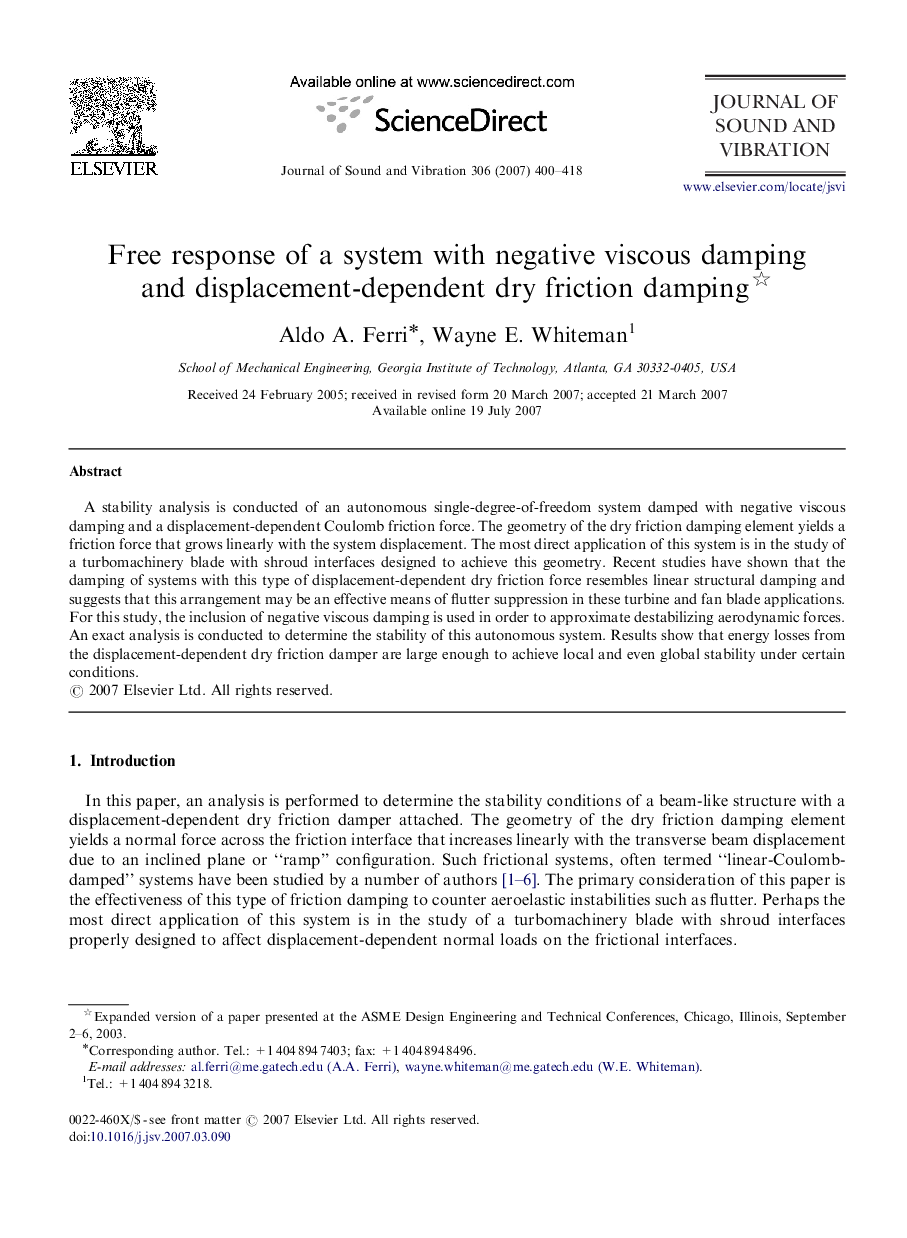| Article ID | Journal | Published Year | Pages | File Type |
|---|---|---|---|---|
| 289900 | Journal of Sound and Vibration | 2007 | 19 Pages |
A stability analysis is conducted of an autonomous single-degree-of-freedom system damped with negative viscous damping and a displacement-dependent Coulomb friction force. The geometry of the dry friction damping element yields a friction force that grows linearly with the system displacement. The most direct application of this system is in the study of a turbomachinery blade with shroud interfaces designed to achieve this geometry. Recent studies have shown that the damping of systems with this type of displacement-dependent dry friction force resembles linear structural damping and suggests that this arrangement may be an effective means of flutter suppression in these turbine and fan blade applications. For this study, the inclusion of negative viscous damping is used in order to approximate destabilizing aerodynamic forces. An exact analysis is conducted to determine the stability of this autonomous system. Results show that energy losses from the displacement-dependent dry friction damper are large enough to achieve local and even global stability under certain conditions.
